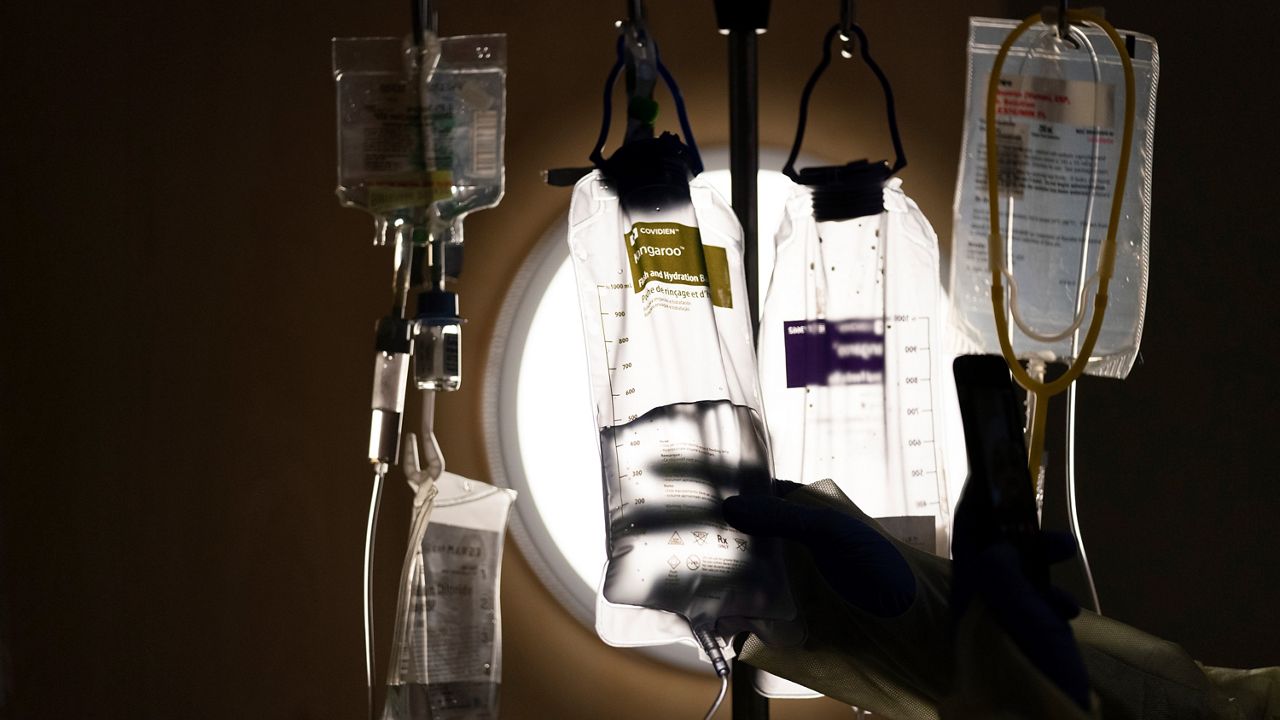SANTA ANA, Calif. (CNS) — The number of coronavirus patients in Orange County hospitals has increased by 14 people to 117, according to the latest state numbers released Saturday.
Of those patients, 17 were being treated in intensive care, down from 18 the previous day.
The latest figures come two days after county health officials reported 1,136 new cases of COVID-19 for the week, increasing the cumulative count to 673,169 since the pandemic began.
The county also logged 23 more COVID-related fatalities Thursday, bringing the death toll to 7,518. Eighteen of the deaths happened this month, three occurred in September, and two happened in July, according to the Orange County Health Care Agency.
The county’s test positivity rate went from 5.9% last week to 5.3%, with the statistic going from 5% to 4.7% in the health equity quartile, which measures the communities hardest hit by the pandemic. The daily case rate per 100,000 dropped from 5.4 to 4.7 on a seven-day average with a seven-day lag, and fro 5.6 to 4.9 in the adjusted daily case rate per 100,000 on a seven-day average with a seven-day lag.
The county does not report COVID data on weekends.
“We’re holding steady from last week,” Andrew Noymer, an epidemiologist and UC Irvine professor of population health and disease prevention, told City News Service on Friday. “We’re clearly still low in terms of hospitalizations — we’re clearly still in a lull.
“I’m happy to report that we’re in a lull, but we really still don’t know what’s going on because everyone is doing at-home tests if they’re testing at all. We really only know about the severe cases, and what we do know is the severe cases are low, but it doesn’t mean that COVID has gone away. It just means the severe cases are low.”
Noymer noted, “We’ve seen this in the previous two falls. We’ve seen this before, so people should be wary as we head into the winter that it will continue to ramp up.”
Noymer also addressed a rise in flu and RSV (respiratory syncytial virus) cases, noting that a debate is underway among scientists as to why there has been an increase in other viruses. Some scientists hypothesize that it is due to what is known as “debt immunity,” while others argue for hypoimmunity.
Debt immunity occurs when something interrupts the spread of viruses and leads to a catching up in cases later. People build up an immunity each year with an infection and may not be infected again the following season. The social distancing and masking, it has been argued, reduced infections during the pandemic, so now that may explain the rise in cases this fall.
“The flu chickens are coming home to roost, so to speak,” Noymer said.
“Hypoimmunity is basically that COVID does a number on our immune systems and either permanently or temporarily — probably temporarily — we’re more susceptible to infections now,” he added.
“The acid test could be next year, because next year we can’t keep saying its immunity debt,” Noymer said. “But we may never be able to distinguish between these two theories. We may never really know. If flu gets progressively worse every season it might be COVID is doing permanent damage on immune systems, but I think that’s overly pessimistic. It’s complicated even further that people are getting COVID multiple times.”



